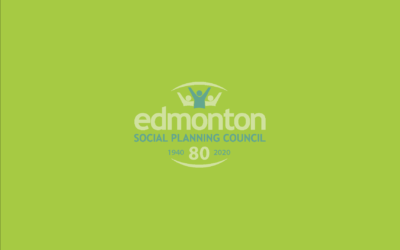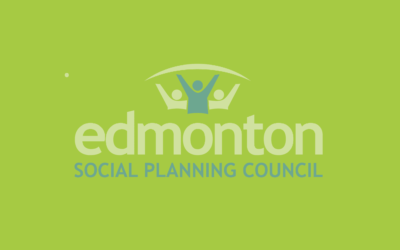Blog: It’s time for an upgrade: Improving emergency shelter standards in Edmonton

Written by Brett Lambert, Community Engagement Coordinator
For more than a decade, ending chronic homelessness has been a high priority for the City of Edmonton. The city was praised for reducing its homeless population in half, from 3,200 in 2009 to 1,600 in 2019. However, with the COVID-19 pandemic in 2020, this progress has experienced a major setback. To date, the number of people in Edmonton experiencing homelessness is nearly 2,700 according to Homeward Trust Edmonton.
As a result of the pandemic, temporary encampments popped up, most notably Camp Pekiwewin and Peace Camp. These camps served to raise awareness for the situation of Edmonton’s unhoused populations and the need for tangible and concrete action, particularly in the area of supportive housing.
With emergency shelters available for the unhoused, some might wonder why do encampments exist at all? While there are complexities to this dynamic, a lot boils down to safety concerns and a sense of belonging. Violent incidents, outbreaks of COVID-19, and gaps in accommodations and inclusion are some of the reasons individuals do not access these shelters. Though encampments are neither ideal nor a permanent solution, they do create a sense of community and a strong network of support among peers.
Nevertheless, an end to homelessness is the ultimate goal. Access to emergency shelters that are safe, accommodating, and inclusive has the potential to be a gateway for the unhoused to find stable housing and break free from the cycle of poverty.
With this in mind, Edmonton City Council saw the urgency to upgrade emergency shelter standards, a need which has only grown more pressing in light of COVID-19 (crowded shelters in a time of physical distancing is not conducive to slowing the spread of the virus). On August 25, 2021, the Community and Public Services Committee recommended that City Council approve a new report, City of Edmonton Minimum Emergency Shelter Standards.
The report outlines best practices for walk-up, overnight emergency shelter services for people experiencing homelessness in Edmonton. It was designed to ensure that essential services are client-centred, trauma informed, and are delivered in a way that benefits both individuals who are unhoused and the surrounding community. The guiding principles of these standards promote inclusion, such as an individual’s gender identity, ethnicity, sexual orientation, disability, and other considerations. Culturally appropriate services for Indigenous peoples and an anti-racist approach is also crucial.
Other standards include providing 24/7 availability, dignified sleeping quarters, storage options for personal belongings, accommodations for pets, improved food and nutritional services. Additional supports for mental health, as well as LGBTQ2S+ and youth are also discussed.
It is also worth noting that the proposed emergency shelter standards from the City of Edmonton represent a significant upgrade from the current shelter standards as laid out by the Government of Alberta. While requirements for areas like food service, sleeping accommodations, and programs are at the discretion of the shelter operator, the proposed standards are a lot more concrete and specific, taking into account the unique and complex needs of those who access shelters, proactively making shelters more welcoming and accommodating. If implemented in its entirety, there is a lot of potential for improve the well-being of a shelter’s clients.
Of course, emergency shelters should be treated as just that: emergencies. They must operate as part of the continuum of housing and housing supports for unhoused individuals. When addressing emergency needs, the report acknowledges that these shelters are a crucial gateway to housing and other support programs. The ultimate goal is to successfully assist the unhoused out of the system and into stable and appropriate housing solutions, which is paramount to reversing the alarming trend of increased homelessness numbers due to the pandemic.



